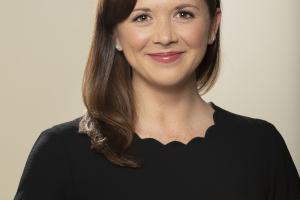
Description
Adrienne Campbell-Washburn, Ph.D., has been teaching a magnetic resonance imaging (MRI) system new tricks—and it’s shaking up the field of imaging. A staff scientist leading NHLBI’s MRI Technology Program, Campbell-Washburn not only has designed a system that takes drastically-improved images of the lungs; it also makes it easier for cardiologists to diagnose and treat some heart diseases during MRI guided procedures.
“It has been exciting to go against the norm and to problem-solve in a different way,” said Campbell-Washburn, who spent years testing the new system through simulations. “My colleagues often questioned me along the way because I was going against a 30-year trend in MRI technology. So, it’s been fun telling them all about the new system and the interesting new clinical applications that we are exploring.”
The problem Campbell-Washburn has been trying to solve seemed an unlikely one in an era when human imaging is being pushed to ever new heights, thanks to what now are some of the world’s most powerful MRI machines—about 140,000 times the strength of the Earth’s magnetic field. But while these high and ultra-high MRI systems have made for triumphant gains in the imaging of brains, they have presented major challenges for imaging the heart and lungs: higher costs to healthcare systems and posed the risk of heating metal devices during imaging.
To get around these challenges, Campbell-Washburn took a completely different—and what others once considered counterintuitive—approach. Instead of thinking about using expensive, powerful magnets for high and ultra-high magnetic fields, Campbell-Washburn set her sights on lower fields combined with faster, efficient ways to take an image—an approach that leverages recent advancements in engineering and computation. The result: enhanced images of the lungs and new opportunities for image-guided interventions.
“I have ‘a ha’ moments every time I see this technology produce high quality images of cardiac disease, lung disease, and even the abdomen and the brain,” said Campbell-Washburn.
Her innovation impressed the judges at the fifth annual American Thoracic Society Building Education to Advance Research (BEAR) Cage competition—a “Shark Tank”-style live pitch session for early career professionals. She won this year’s competition by describing the utility of the new MRI system for lung imaging.
Campbell-Washburn said she chose to study MRI physics to make an impact on patients, and her colleagues say she’s well on her way. She imagines the re-tooled MRI system being used in lung imaging to measure breathing, circulation, anatomy, tissue characteristics, and blood oxygenation in a single exam—a capability of the system that has been sorely missing in the clinic. She is also hopeful that her invention will allow complex heart procedures under MRI image guidance and make medical imaging more accessible for patients with implanted devices.
Learn more about Adrienne Campbell-Washburn



